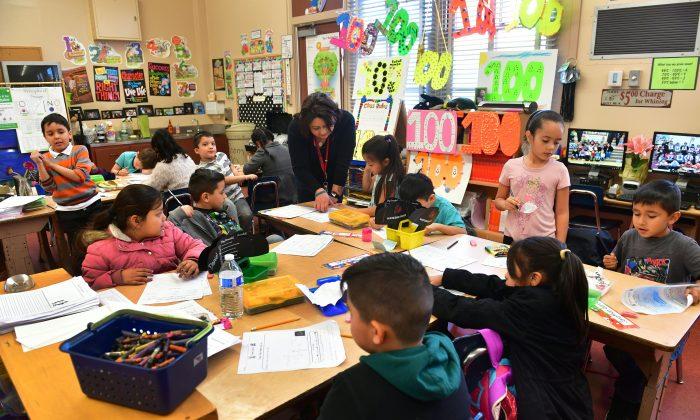A California program that helps kids from low-income families save money for college has been under-utilized, program officials said last month.
The CalKIDS program, launched in August 2022, opens a small college savings account for every low-income child in grades 1–12 and children born on or after July 1, 2022.
According to a March 6 announcement from CalKIDS, only about 300,000 students and families have accessed their accounts—or 8.3 percent of those eligible.
In 2021, the state invested $1.9 billion as a one-time grant and pledged $186 million to the program for every year after that, according to state officials in 2021.
Joe DeAnda, communications director with the California State Treasurer’s Office, which oversees the CalKIDS program and its outreach efforts, said it’s working with local school districts to raise awareness of the program.
The Riverside County Office of Education has submitted more than 13 percent of the state’s claims, according to Catalina Cifuentes, a director at the department.
Meanwhile, Fresno Unified’s school board voted on March 6 to create a districtwide campaign to raise awareness about the CalKIDS accounts that are available to most of its students; currently, only about 6 percent of eligible Fresno Unified students are enrolled.
Low-income students receive an initial $500 deposit, with an additional $500 if a child is identified as a foster youth and another $500 if a child is identified as a homeless youth.
Meanwhile, eligible newborns receive an initial $25 deposit into their account, with an additional $25 when families register on the program’s online portal and another $50 deposit when a new or existing ScholarShare 529 college savings account is linked to the CalKIDS account. ScholarShare 529 is California’s state-sponsored college savings plan.
Under the program, the funds can be used for a student’s tuition and related fees, books and supplies, certain room and board costs, and computer equipment.
To register a newborn, parents need the Local Registration Number located on the child’s birth certificate or the child’s unique CalKIDS code provided in a letter from the program, the child’s date of birth, and the county in which the child was born.
To register a school-age child, parents need the child’s Statewide Student Identifier or the child’s CalKIDS code, the child’s date of birth, and the county in which the child is enrolled in school.







